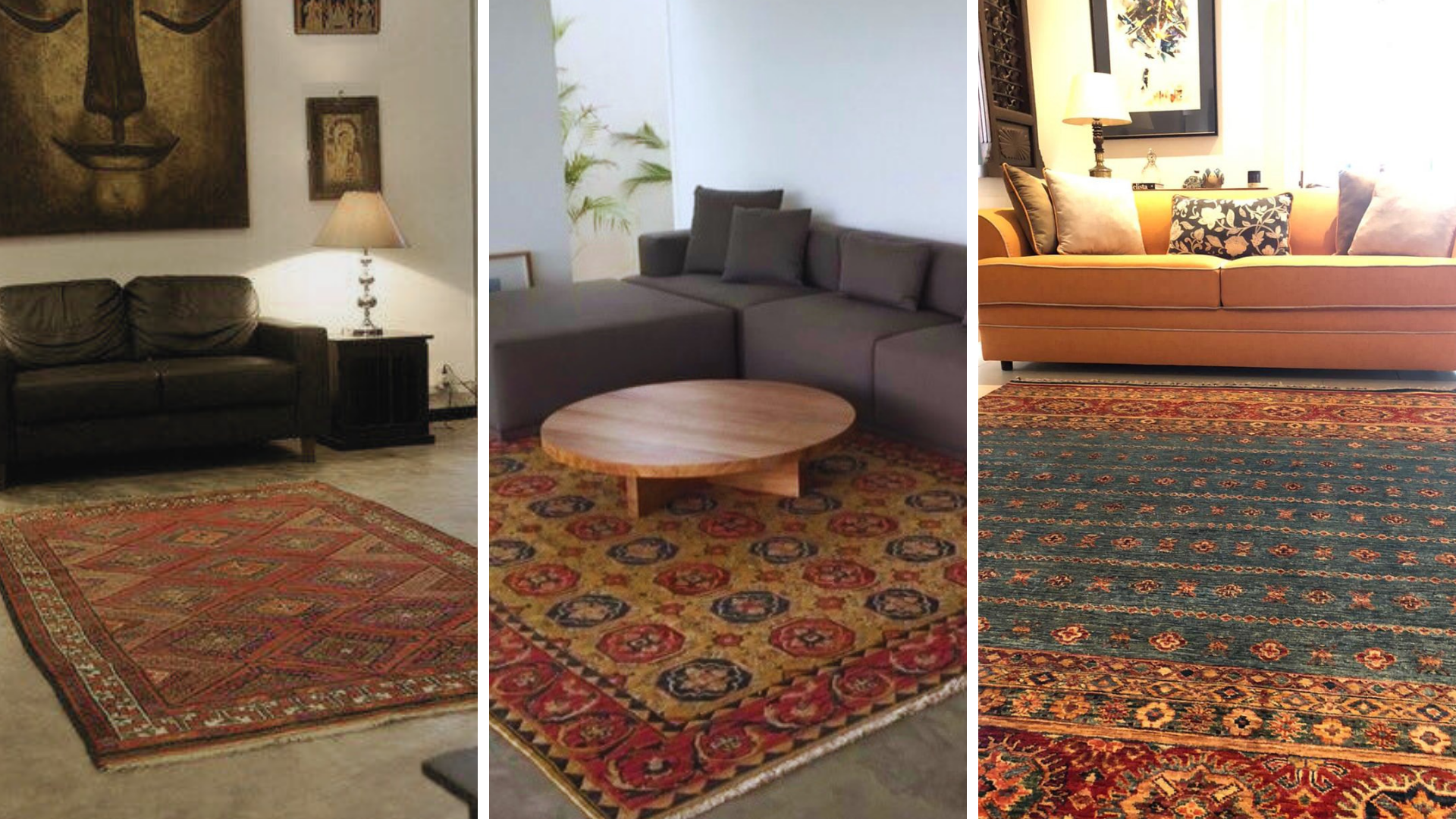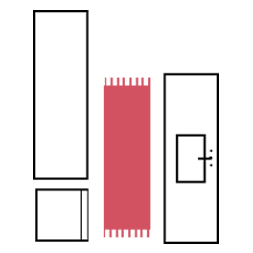
Placing a rug might seem simple, but getting it just right can change how the whole room feels. It’s not just about filling empty floor space — a well-placed rug helps connect your furniture, define areas, and make things feel more pulled together.
Here’s how to place your rug so it works with your space, not against it:

Living Room
Your rug should help anchor the seating area. At the very least, make sure the front legs of your sofas and chairs are on the rug. If you’ve got a big enough rug, even better — let the whole sofa sit on it. Just don’t leave the rug floating in the middle of the floor. It makes everything feel disconnected.
Leave a few inches of exposed floor around the rug to help frame the space. It’ll feel more open and balanced.

Dining Room
In the dining area, size is everything. Your rug should extend about 24 inches beyond the edge of the table — enough for chairs to slide in and out without catching. It’s cleaner, more functional, and looks way better than a rug that ends right at the table legs.

Bedroom
There’s nothing worse than stepping out of bed onto a cold floor. A large rug that extends 2–3 feet around the bed creates a soft landing on all sides. If your space (or budget) doesn’t allow for that, use two runners on either side, or place a smaller rug toward the foot of the bed. You can even angle it a little for a more relaxed, lived-in look.

Entryway
This is the first thing people see, so make it count. Choose a rug that fits the shape of your space — runners work well in narrow entries, while a rectangular or oval rug suits wider ones. Make sure the door can swing open freely over it. A low-pile or flatweave rug works best here — it’s easier to clean and less likely to bunch up.

Kitchen
Yes, rugs can work in kitchens — as long as they’re low-maintenance. A runner in front of the sink or stove adds comfort underfoot and a splash of style. Just make sure it’s slip-resistant and easy to clean. Avoid rugs that are too thick or fluffy — spills happen, and you’ll want something you can wipe or toss in the wash.

Outdoors
Think of your outdoor rug as the foundation of your patio or balcony setup. Ideally, all furniture — sofas, chairs, coffee tables — should sit entirely on the rug if possible. This creates a more finished, lounge-like vibe and visually ties the area together. If space is tight, at least make sure the front legs of all seating pieces are on the rug.
Choose an outdoor rug that’s made to handle the elements — look for something UV-resistant, weatherproof, and easy to hose down. And if it’s in a windy spot, make sure it’s anchored properly or heavy enough not to shift with the breeze.

